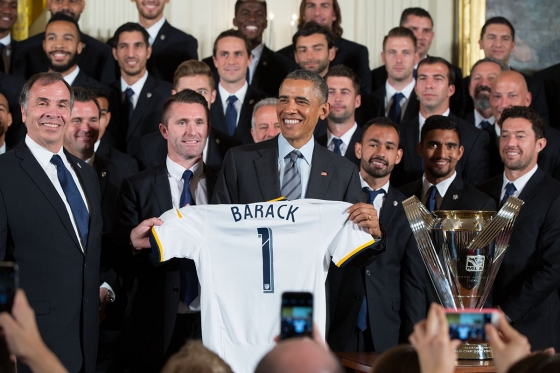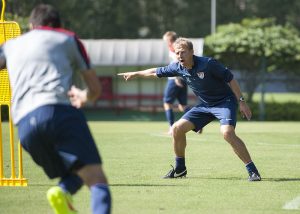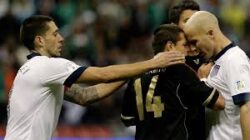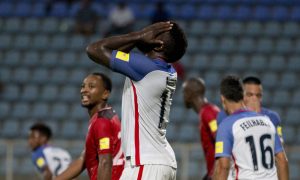Last Monday, Jurgen Klinsmann was fired as head coach of the U.S. Men’s National Soccer Team. A day later, Bruce Arena was hired as his replacement. Arena previously managed the team from 1998-2006, leading them to the quarterfinals of 2002 World Cup. By bringing back Arena for a second stint, U.S. soccer and its president, Sunil Gulati, have opted for stability after an up-and-down Klinsmann era. While this stability may be achieved in the short-term under Arena, his hiring is a regressive step for U.S. soccer.
When Klinsmann was hired in 2011, there was a clear intent to push the Men’s National Team to a higher level. The team had been a consistent World Cup qualifier and traded CONCACAF Gold Cup titles with Mexico, but when Gulati finally had a chance (after years of trying) to hire Klinsmann, who coached Germany to a third place finish at the 2006 World Cup, he didn’t hesitate.
Klinsmann’s hiring was more than an effort to improve results for the National Team, however. It signaled an attempt to revolutionize U.S. soccer. As an established European coach, Klinsmann represented a chance to emulate the elite and holistic systems of soccer in many European countries. Throughout his tenure, Klinsmann’s job included working on youth development and improving U.S. soccer’s infrastructure, especially after becoming U.S. soccer technical director in December 2013.
In many ways, Klinsmann should be considered a failure. After five-plus years at the helm, he could never nail down a consistent team or formation, and constantly played players out of position. Bad losses were frequent, from an embarrassing 2015 Gold Cup to a 2-0 loss to Guatemala to the World Cup qualifying defeats to Mexico and Costa Rica that ultimately led to Klinsmann’s firing.
However, it is too early to say whether Klinsmann’s failure was limited to the national team’s performance or on a broader scale. He at least gave call ups to players like John Brooks and Julian Green, both of whom could have played for Germany and could contribute to the national team for years to come. In the past, the likes of Neven Subotic and Giuseppe Rossi chose to play for Serbia and the Italy respectively, despite being eligible to play for the U.S.
We also won’t see the results of Klinsmann’s work with the American youth system for a while. Maybe the changes he implemented are even worse than his coaching, but I suspect that even if they don’t produce results, they have put the U.S. on a path towards integrating the successful practices of European soccer into the American system.
By hiring Arena, the U.S. threatens to undo the progress it may have made under Klinsmann. On the player front, Arena has been critical of foreign-born U.S. players. In a 2013 interview, he said that, “we aren’t making progress” by having players born in other countries. Arena retracted his statement on a podcast in April, but he could still create a bad relationship with foreign-born U.S. players, as Abby Wambach did when she made a similar criticism.
More importantly, Arena represents a denial that U.S. soccer needs to improve. For years, the men’s national team’s strength was its toughness, playing hard for 90 minutes and being able to scrap together results. That’s all well and good, except that strength didn’t exist in addition to the team’s great technical skill, but rather in spite of a lack of it. There are many, many countries that know how to play soccer better than the U.S., and it is no coincidence that so many of the best U.S. players, from Clint Dempsey to Christian Pulisic, have spent much of their playing careers abroad.
Klinsmann’s hiring seemed to finally signal an intent to change the status quo and add some flair to the team’s grit. Now, don’t be surprised if Arena brings the team back to the hunkered-down style of old in an effort to make 2018 World Cup qualification more likely.
More likely than not, Arena is a short-term solution to patch things up. His contract only runs through 2018, and even back in 2006, Gulati claimed needing a “fresh approach” as the reason for firing Arena. Results under Klinsmann were becoming increasingly uncertain, and now Arena has been tasked with stabilising the ship. Hopefully, once Arena’s (brief) second tenure is over, the U.S. will return to pushing its program forward, but even a quick foray into the past can only be seen as a negative.
Beyond the national team itself, who knows what effect Arena will have on the broader U.S. soccer infrastructure? The youth system developed under Klinsmann may stay in place, but it certainly won’t be accelerated. Limiting or even stopping the growth of the program now won’t affect Arena, but it will hamper U.S. soccer years down the line.
To be fair, Bruce Arena has had success as a soccer coach. He’s won five MLS Cups and has a better winning percentage with the national team than Klinsmann. The claim that he gives the U.S. a better chance at qualifying for the 2018 World Cup may very well be a valid one, and Arena’s track record suggests that the team might have success in the tournament itself. But to forgo, or at least delay, the health of U.S. soccer’s long-term future for a slightly better chance at immediate success is foolish. Until Gulati and U.S. soccer learn to take risks and push the program forward, the U.S. will remain stuck as a tough underdog that never quite makes the leap towards success.





